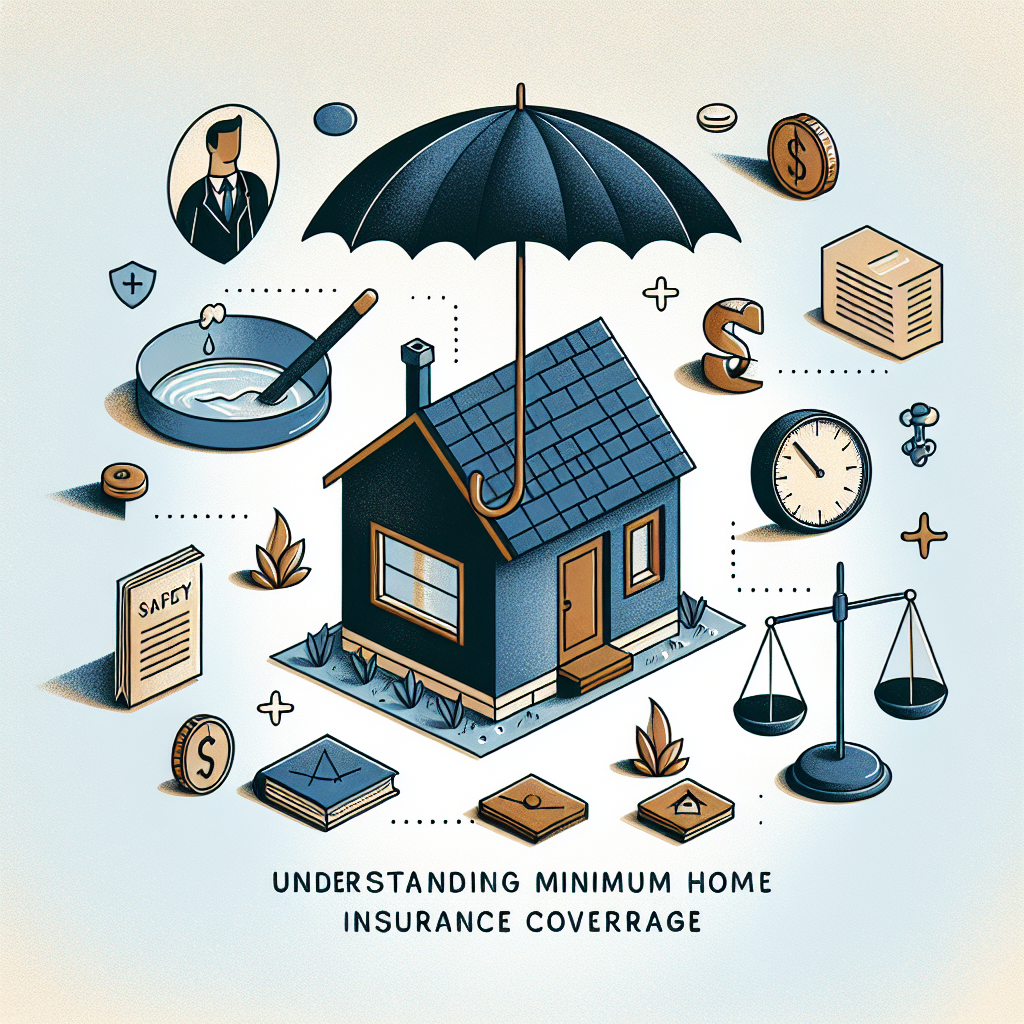Filed under Home Insurance on
Understanding Minimum Home Insurance Coverage

When purchasing a home, securing the proper insurance is crucial. Without adequate protection, homeowners risk significant financial losses from unexpected events. This article dives into minimum home insurance coverage, providing insights into what it entails, why it's important, and how to ensure it meets your needs.
What is Minimum Home Insurance Coverage?
Minimum home insurance coverage refers to the basic level of protection that a homeowner is required to have, often mandated by mortgage lenders. This level of coverage typically includes specific components to safeguard against potential damage or liability that could affect the property owner.
Components of Minimum Coverage
- Dwelling Coverage: Protects the actual structure of your home, ensuring you can repair or rebuild in the event of covered damage.
- Personal Property Coverage: Covers personal belongings inside the home, such as furniture and electronics, against risks like theft or fire.
- Liability Protection: Offers financial protection if someone is injured on your property and you are found legally responsible.
- Additional Living Expenses (ALE): Helps cover the cost of temporary living arrangements if your home becomes uninhabitable due to a covered event.
Why is Minimum Home Insurance Coverage Important?
The significance of minimum home insurance coverage cannot be overstated. Not only does it provide a financial safeguard, but it also fulfills legal and contractual obligations. Here's why it's essential:
Financial Protection
Homeownership entails substantial financial responsibility. Minimum home insurance coverage ensures that you won't face crippling expenses following an unexpected event such as a fire or natural disaster. Without it, the costs of repairs or rebuilding can be overwhelming.
Legal and Mortgage Requirements
Most mortgage lenders require homeowners to have a minimum insurance policy as part of the loan agreement. This requirement protects the lender's investment, ensuring that the property can be rebuilt if necessary.
Peace of Mind
Knowing that you have the necessary coverage in place provides peace of mind, allowing you to enjoy your home without constant worry about potential catastrophes.
How to Determine Adequate Minimum Coverage
While minimum home insurance coverage provides essential protection, determining the right level for your situation involves several considerations:
Evaluating Your Home's Value
Ensure your coverage reflects your home's current market value. It’s essential to update your policy periodically to account for changes in home value or renovations.
Assessing Your Risk
Your location significantly influences the risks your home faces. For instance, areas prone to natural disasters like hurricanes or earthquakes may require additional coverage options.
Personal Possessions Inventory
Conduct an inventory of personal belongings to guarantee your coverage limits are adequate. High-value items may warrant additional endorsements.
Industry Trends and Expert Opinions
Understanding current trends and expert advice can help tailor your minimum home insurance coverage to better suit your needs.
Increasing Natural Disasters
According to industry studies, the frequency and severity of natural disasters are on the rise. Experts recommend evaluating policies annually to ensure they cover such increasing risks.
Technological Advancements in Insurance
The home insurance industry is embracing technology with tools like smart home devices and AI-driven assessments. These innovations can influence premium discounts and improve risk assessments.
Expert Tips
- Consult a Professional: Speaking with an insurance agent can provide tailored advice to reflect personal circumstances.
- Bundle Policies: Consider bundling home and auto insurance for potential discounts.
Optimizing Your Minimum Home Insurance Coverage
Ensuring that your minimum home insurance coverage is optimized involves continuously reviewing and adjusting your policy:
Regular Review of Policy
Schedule an annual review of your insurance policy to ensure it remains aligned with current needs and market conditions. Update coverage based on home improvements or changes in personal belongings.
Understanding Policy Exclusions
Read through your policy carefully to understand any exclusions that may leave you unprotected against certain risks, and consider additional policies if necessary.
Comparing Insurance Providers
Regularly compare insurance providers to ensure competitive pricing and comprehensive coverage. A change in provider can lead to better protection and cost savings.
Conclusion
Understanding and implementing minimum home insurance coverage is a crucial aspect of homeownership that provides financial protection and peace of mind. By evaluating your coverage needs, staying informed on industry trends, and regularly reviewing your policy, you can ensure your home remains safeguarded against the unexpected. Tailor your approach by consulting professionals and keeping abreast of changing conditions to maintain optimal coverage over the years.
By becoming familiar with your insurance options and their implications, you can confidently manage your home's protection and focus on enjoying your investment without additional stress.




